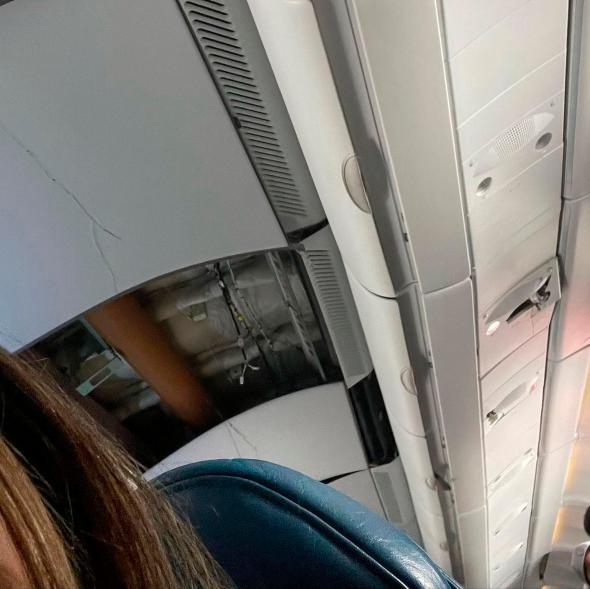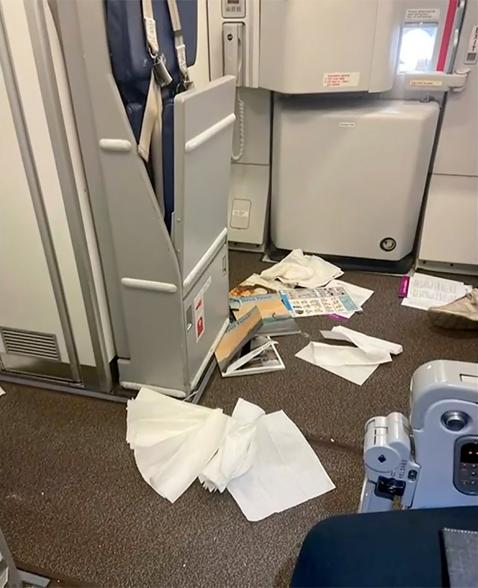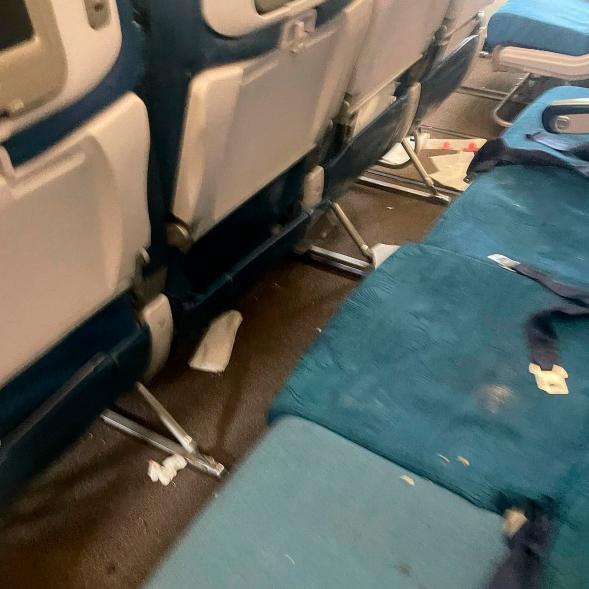Hawaii passengers describe ‘rollercoaster’ flight that left 36 injured
Shaken-up passengers aboard a turbulent Hawaiian Airlines flight from Phoenix to Honolulu that left three dozen people injured described how the terrifying trip felt like a “rollercoaster.”
Officials said 20 people — among them a 14-month-old baby — were hospitalized with injuries ranging from lacerations and bruises to severe head injuries, including 11 patients who were in serious condition from the Sunday flight. Another 16 were also treated for injuries.
Passenger Kaylee Reyes, who was flying with her mother, told Hawaii News Now that her mom had just sat down after returning from the restroom and didn’t have a chance to buckle her seat belt when the turbulence first rattled the plane.
“The plane shook and then went into a sudden drop, kind of how you would if you were on a rollercoaster,” she recounted. “My mom wasn’t buckled and she flew up and hit the ceiling, then hit the floor.”


Reyes recalled observing multiple passengers with head injuries around her.
“When we landed, paramedics came and had to wheel people out,” she told the outlet. “Quite a few people had lacerations on their head and blood dripping down.”
There were 10 crew members onboard the aircraft and a full cabin of 278 passengers, many of them traveling to spend the holidays with family. Three flight attendants were among the injured taken to hospitals on arrival.
At least one person was reported to have lost consciousness, Honolulu Emergency Medical Services Director Jim Ireland said Sunday.
“We are also very happy, and we feel fortunate that there were not any deaths or other critical injuries. And we’re also very hopeful that all will recover and make a full recovery,” Ireland said.
Jazmin Bitanga, who was flying home for the holidays, said there were two drops of altitude — one so intense her boyfriend’s water bottle was flung into the plane’s ceiling and cracked it.
“My life flashed before my eyes. I was scared,” she said. “I turned around and there was a couple of people bleeding and just bracing themselves. Just all around me there were people crying.”

Twitter user @lynnxxyy shared video shot inside the plane after the violent shake-up, writing: “Scariest experience flying: very strong turbulence happened mid flight & some ppl with head injuries from hitting the ceiling. I’m safe just very shaken up.”
The passenger said they were left with a hip injury and suffering from “small anxiety attacks” in the wake of the “very traumatic event.”
Additional footage taken inside the cabin in the aftermath of the dramatic flight showed the interior of the aircraft in disarray, with cracked plastic panels, supplies littering the floor and oxygen masks dangling from the ceiling.
Hawaiian Airlines COO Jon Snook said at a press briefing that such turbulence is isolated and unusual, noting that the airline hadn’t experienced anything like it in recent history.
“Sometimes, these air pockets occur with no warning. It’s rare to have that level of extreme turbulence. It was a very extreme case of mid-air turbulence,” Snook said.
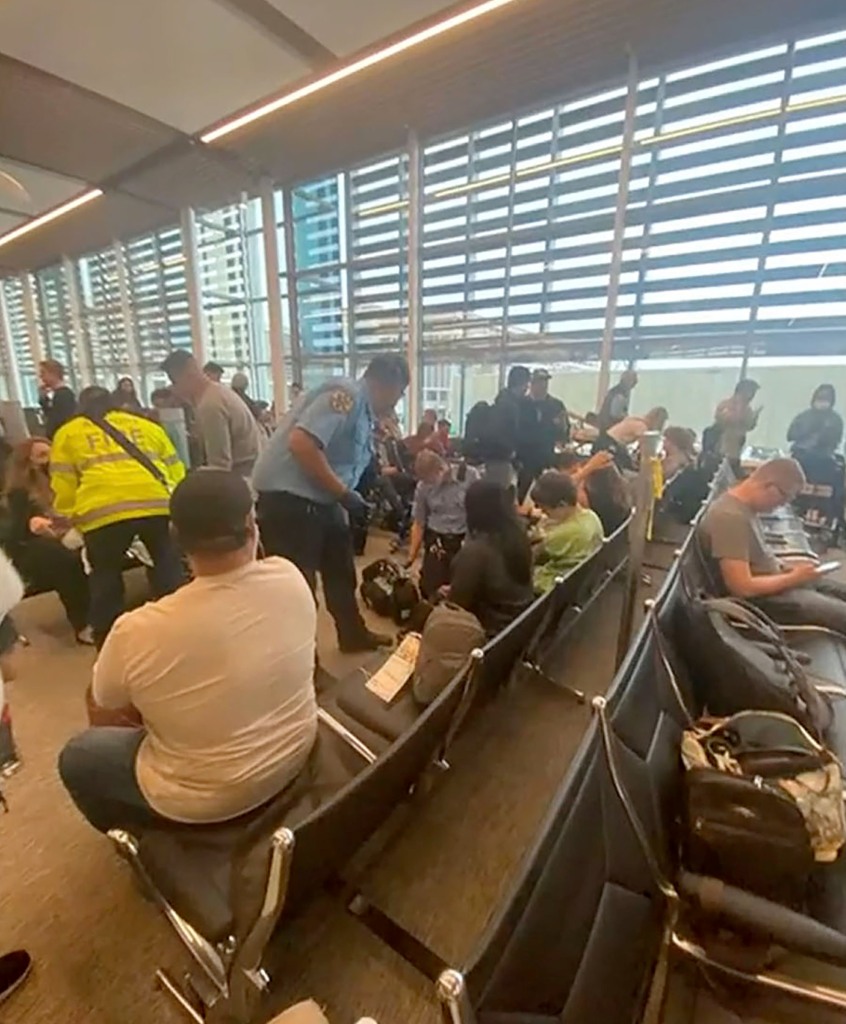
“We’re very thankful the extent of the injuries was not critical,” he added. “It could have been worse.”
There was some internal damage to the aircraft during the turbulence, Snook said. The fasten-seat belts sign was on at the time, though some of those injured weren’t wearing them, he said.
Thomas Vaughan, a meteorologist with the National Weather Service in Honolulu, said there had been a weather advisory for thunderstorms that included Oahu and areas that would have included the flight path at the time of the turbulence.
The airline was aware of the weather forecast and the unstable air and weather conditions, but had no warning that the particular patch of air where the turbulence occurred “was in any way dangerous,” Snook said.
He didn’t know how much altitude the plane lost during the turbulence, saying that would be part of an investigation involving the National Transportation Safety Board. The plane’s flight data recorder would provide those details, he said.
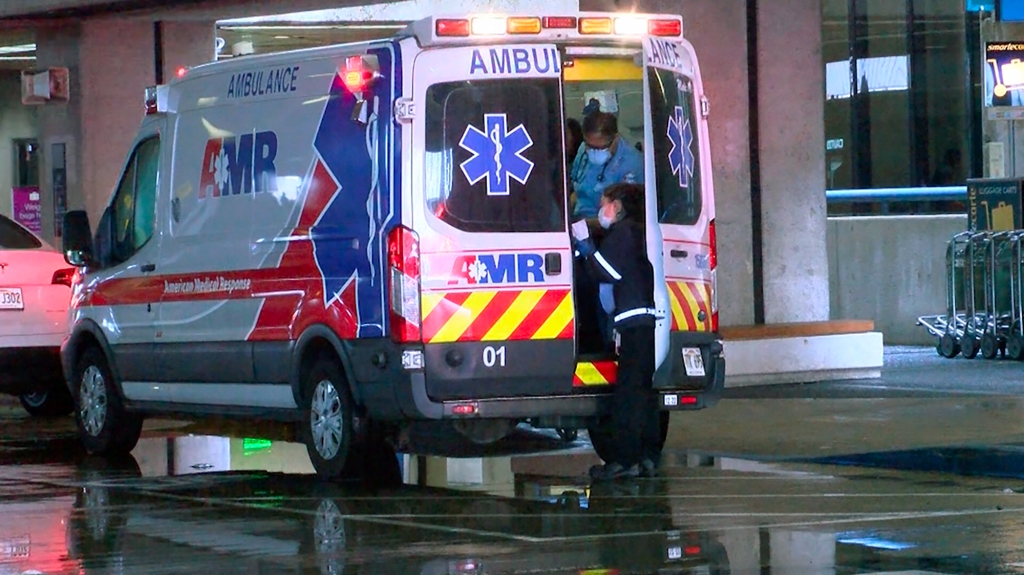
The investigation would also address precisely what the passengers and crew were doing at the time, he said.
The Airbus A330-200 began its descent immediately after the turbulence, and the crew declared an emergency because of the number of injuries on board, he said. Air traffic controllers gave the flight priority to land.
The aircraft will undergo a thorough inspection and maintenance, mostly to fix components in the cabin, Snook said.
Snook said he could only speculate whether some passengers hit their heads, but that was likely based on the injuries and the damage to cabin paneling.
“If you don’t have your seat belt on, you stay where you are as the aircraft goes down, and that’s how those injuries occur,” Snook said.
The investigation will examine what other measures were taken, aside from turning on the fasten seat belt sign, to ensure passengers were buckled in, he said.
In 2019, 37 passengers and flight crew members were injured when an Air Canada flight from Vancouver to Sydney hit intense turbulence about two hours past Hawaii. The Boeing 777-200 was diverted to Honolulu, where the injured received treatment. Thirty people were taken to hospitals and nine had serious injuries.
Over the Atlantic, a 2017 American Airlines flight from Athens hit severe turbulence along the New York coastline. Seven crew members and three passengers were injured.
Most people associate turbulence with heavy storms. But the most dangerous type is so-called clear-air turbulence. The wind-shear phenomenon can occur in wispy cirrus clouds or even clear air near thunderstorms, as differences in temperature and pressure create powerful currents of fast-moving air.
Planes can sail into clear-air turbulence without warning.
With Post wires
Read the full article Here


